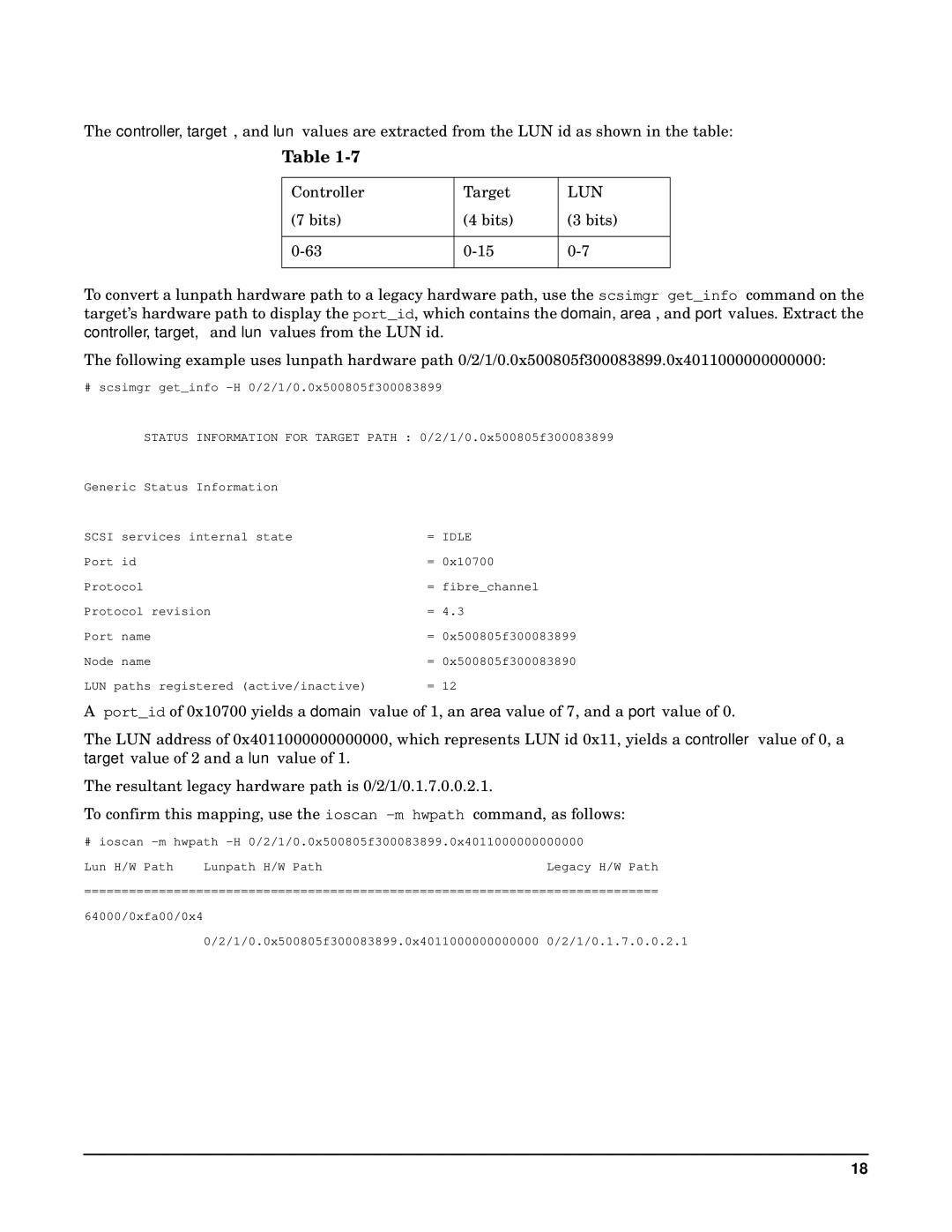The controller, target, and lun values are extracted from the LUN id as shown in the table:
Table
Controller | Target | LUN |
(7 bits) | (4 bits) | (3 bits) |
|
|
|
|
|
|
To convert a lunpath hardware path to a legacy hardware path, use the scsimgr get_info command on the target’s hardware path to display the port_id, which contains the domain, area, and port values. Extract the controller, target, and lun values from the LUN id.
The following example uses lunpath hardware path 0/2/1/0.0x500805f300083899.0x4011000000000000:
# scsimgr get_info
STATUS INFORMATION FOR TARGET PATH : 0/2/1/0.0x500805f300083899
Generic Status Information |
|
SCSI services internal state | = IDLE |
Port id | = 0x10700 |
Protocol | = fibre_channel |
Protocol revision | = 4.3 |
Port name | = 0x500805f300083899 |
Node name | = 0x500805f300083890 |
LUN paths registered (active/inactive) | = 12 |
A port_id of 0x10700 yields a domain value of 1, an area value of 7, and a port value of 0.
The LUN address of 0x4011000000000000, which represents LUN id 0x11, yields a controller value of 0, a target value of 2 and a lun value of 1.
The resultant legacy hardware path is 0/2/1/0.1.7.0.0.2.1.
To confirm this mapping, use the ioscan
# ioscan
Lun H/W Path | Lunpath H/W Path | Legacy H/W Path |
=============================================================================
64000/0xfa00/0x4
0/2/1/0.0x500805f300083899.0x4011000000000000 0/2/1/0.1.7.0.0.2.1
18
